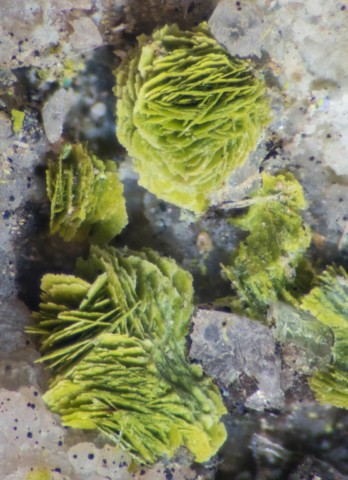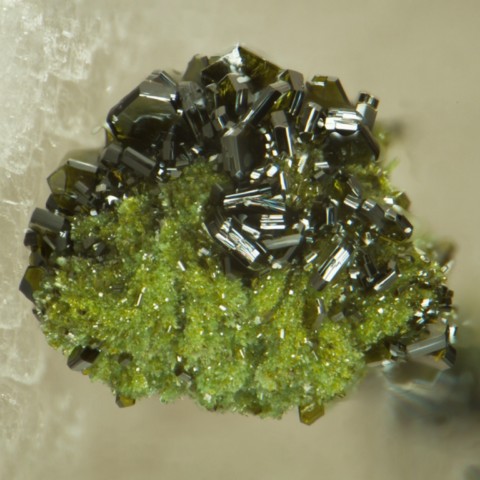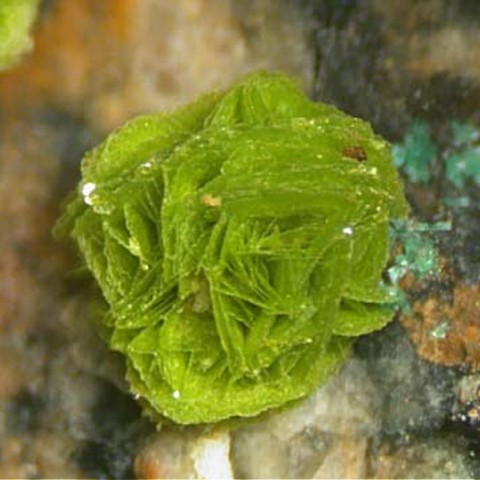VÉSIGNIÉITE
Class : Phosphates, arsenates, vanadates
Subclass : Anhydrous vanadates
Crystal system : Monoclinic
Chemistry : BaCu3(VO4)2(OH)2
Rarity : Rare
Vésigniéite is a copper and barium vanadate discovered in 1955. This mineral forms in the oxidation zone of deposits containing vanadium. It was named in honor of the French colonel Louis Vésignié who was certainly the greatest collector of minerals of his time and a great donor, since he bequeathed the 40,000 samples of his collection to the Faculty of Sciences of Paris as well as to the Museum of Natural History of Paris. Vesignieite forms aggregates of thin lamellae not exceeding one millimeter, pseudohexagonal in appearance, olive green to yellow-green in color.
Main photo : Vésigniéite from Bardon Hill Quarry, England © Ru Smith
Vésigniéite in the World
Twinning
Twinning is known on {001}, sometimes polysynthetic.
Fakes and treatments
No fakes listed for this mineral species.
Hardness : 3 to 4
Density : 4.56
Fracture : Undetermined
Streak : Green
TP : Translucent
RI : 2.053 to 2.133
Birefringence : 0.080
Optical character : Biaxial -
Pleochroism : None
Fluorescence : None
Solubility : -
Magnetism : NoneRadioactivity : None





